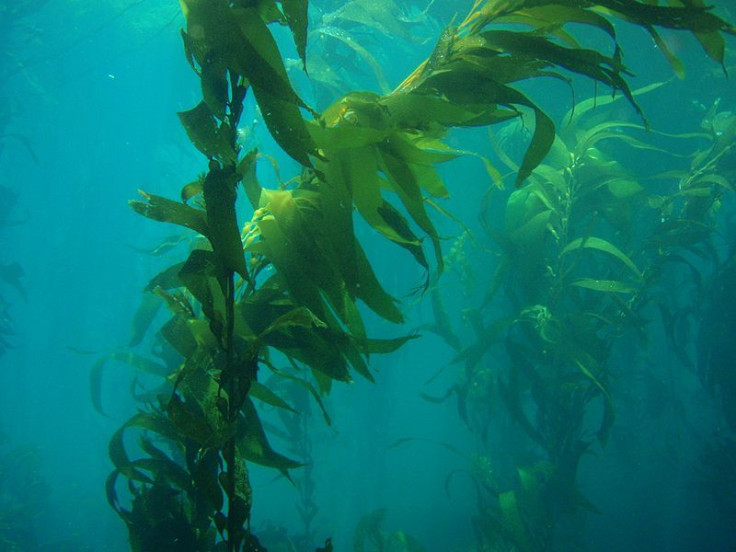Radiation In Calif. Kelp? Scientists To Test West Coast Water 3 Years After Fukushima Nuclear Meltdown

California biologists plan to test coastal kelp for traces of radioactive material three years after the nuclear meltdown in Fukushima, Japan. Experts are concerned that radiation, which leaked into the Pacific Ocean from Japan’s Fukushima nuclear plant in March 2011, may have reached the west coast of the U.S. Scientists hope California’s kelp will give them an answer.
“We don’t know if we’re going to find a signal of the radiation,” Matt Edwards, a biologist at San Diego State University, told U-T San Diego. “And I personally don’t believe it’ll represent a health threat if there is one. But it’s worth asking whether there’s a reason to be concerned about a disaster that occurred on the other side of the planet some time ago.”
Edwards and a team of about 50 other scientists will collect kelp samples from up and down the California coast. Kelp absorbs tiny amounts of material from the water around it, so if there are radioactive isotopes in California’s coastal waters, biologists should be able to spot it.
Scientists will look for signs of isotopes cesium-134 and cesium-137, which could have been carried by ocean currents to the California coast sometime this year.
But researchers say that even if they do find trace amounts of radioactive material in California’s kelp, it’s nothing to worry about. According to Bloomberg Businessweek, our oceans already contain radioactive material. Nuclear power plants across the globe routinely discharge radioactive water into our oceans. The Diablo Canyon plant in California, for instance, releases more radiation into the sea than the Fukushima station after the disaster. The radiation released by the Diablo Canyon plant, however, is a less dangerous isotope than what’s being let out in Japan.
“There’s a point to be made that we live in a radioactive world and the ocean just has radioactive isotopes in it,” Ken Buesseler, senior scientist at the Woods Hole Oceanographic Institution in Massachusetts, told Bloomberg. “People have a limited knowledge of radioactivity.”
Buesseler predicts the Fukushima plume will arrive in the U.S. sometime early this year. The new kelp study, called the Kelp Project, aims to alleviate California residents’ fears about what’s in their ocean.
“There’s been a lot of confusion between the levels of radiation that have been detected and levels that are harmful,” Chad Nelsen, environmental director at the San Clemente-based Surfrider Foundation, told U-T San Diego. “So far, there have been no levels that are a real concern.”
In March 2011, three reactors at Tokyo Electric Power Co.’s Fukushima Daiichi station melted down following a magnitude 9.0 earthquake and subsequent tsunami. Officials in Tokyo estimate that since the meltdown, about 300 metric tons of contaminated groundwater seep into the Pacific Ocean every day, Bloomberg reports.
Since the 2011 Fukushima nuclear disaster, scientists say as many as 20 trillion becquerels -- a unit used to measure radioactivity -- of cesium-137, 10 trillion becquerels of strontium-90 and 40 trillion becquerels of tritium were released into the Pacific Ocean via groundwater. One becquerel is equal to the activity of a quantity of radioactive material in which one nucleus decays per second.
Scientists have long debated the health risks of radioactive material being released into the environment by the world’s 435 nuclear power plants. Exposure to large amounts of radioactivity is known to cause nausea, vomiting, hair loss and, in serious cases, hemorrhaging, central nervous system damage and even death.
Different radioactive isotopes pose more danger than others. Cesium isotopes, for example, are among the most dangerous because they emit flesh-penetrating gamma rays.
In the U.S., the Nuclear Regulatory Commission, or NRC, monitors the amount of radioactive material emitted from nuclear power plants. Often the levels of radiation released fall far below the levels allowed by the NRC.
© Copyright IBTimes 2025. All rights reserved.






















